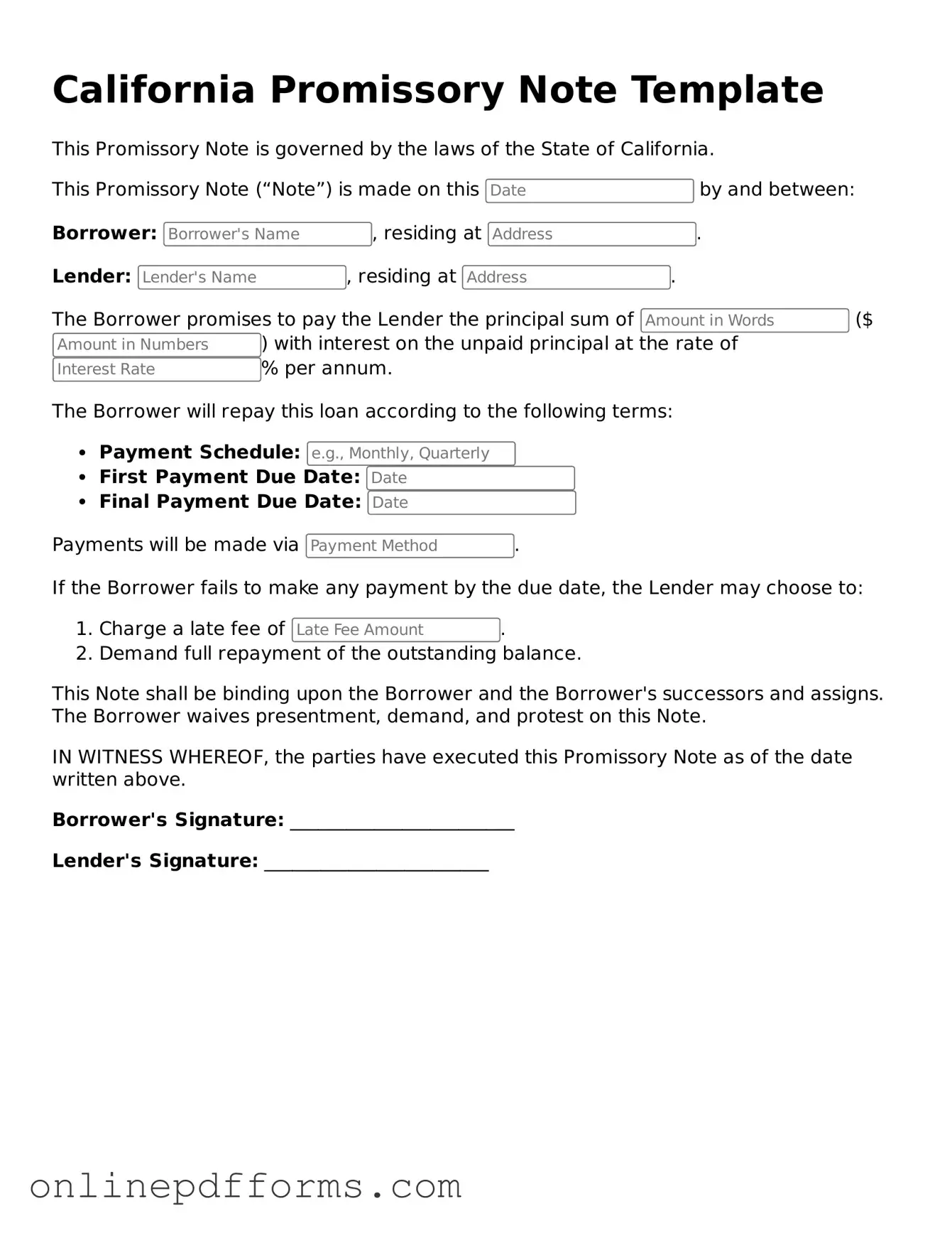The California Promissory Note form bears similarity to the Loan Agreement. Both documents outline the terms of a loan, including the principal amount, interest rate, and repayment schedule. However, a Loan Agreement often encompasses broader terms, such as collateral, default provisions, and other obligations of the borrower. While a Promissory Note is a straightforward acknowledgment of the debt, a Loan Agreement provides a more comprehensive framework for the lending relationship.
Another document akin to the California Promissory Note is the Mortgage. A Mortgage secures a loan by placing a lien on real property, ensuring the lender has a claim if the borrower defaults. Like a Promissory Note, it specifies the amount borrowed and the repayment terms. However, a Mortgage typically involves real estate transactions and includes detailed provisions regarding foreclosure and property rights, which are not present in a standard Promissory Note.
The Secured Note is also similar to the California Promissory Note. This document not only outlines the terms of the loan but also provides security to the lender by tying the loan to specific collateral. In contrast to a standard Promissory Note, which is unsecured, a Secured Note offers additional protection for the lender, as it can claim the collateral in case of default.
A Personal Guarantee is another document that relates closely to a Promissory Note. In situations where a business borrows money, a Personal Guarantee may be required from the owners or principals. This document ensures that if the business defaults, the individuals personally agree to repay the debt. While a Promissory Note focuses on the terms of the loan itself, a Personal Guarantee adds a layer of personal accountability from the guarantors.
The IOU, or informal acknowledgment of debt, shares similarities with the California Promissory Note but is less formal. An IOU typically states the amount owed and may include basic repayment terms, but it lacks the detailed structure and legal enforceability of a Promissory Note. While both documents serve as evidence of a debt, an IOU does not provide the same level of protection for the lender.
When engaging in transactions involving trailers, it is crucial to utilize the appropriate documentation to ensure legality and protect all parties involved. The Auto Bill of Sale Forms provide the necessary framework to record the sale and transfer of ownership clearly. By accurately completing these forms, sellers and buyers can confirm the details of the transaction, safeguarding their interests while facilitating a smooth exchange.
A Credit Agreement is another document that parallels the California Promissory Note. It outlines the terms of credit extended to a borrower, including limits, fees, and repayment obligations. While a Promissory Note may be used for a specific loan amount, a Credit Agreement can cover a revolving line of credit, allowing for multiple borrowings and repayments over time. The complexity of a Credit Agreement often exceeds that of a Promissory Note.
The Loan Disclosure Statement is similar in that it provides critical information about the loan terms. This document is typically provided to borrowers to ensure transparency regarding interest rates, fees, and total repayment amounts. While it does not function as a binding agreement like a Promissory Note, it serves as an important tool for borrowers to understand their obligations before signing a Promissory Note or Loan Agreement.
The Debt Settlement Agreement also shares some characteristics with a Promissory Note. This document is used when a borrower negotiates with a lender to settle a debt for less than the full amount owed. It outlines the terms of the settlement, including payment amounts and schedules. While a Promissory Note establishes a debt, a Debt Settlement Agreement modifies the terms of repayment and may lead to debt forgiveness.
Finally, the Forbearance Agreement is related to the California Promissory Note in that it addresses the temporary postponement of loan payments. When a borrower faces financial difficulties, they may enter into a Forbearance Agreement with the lender to delay payments without defaulting. This document specifies the new terms and conditions during the forbearance period, providing a temporary solution to the obligations outlined in the original Promissory Note.
